Potrebujeme váš súhlas na využitie jednotlivých dát, aby sa vám okrem iného mohli ukazovať informácie týkajúce sa vašich záujmov. Súhlas udelíte kliknutím na tlačidlo „OK“.
ASTM C1754/C1754M-12
Standard Test Method for Density and Void Content of Hardened Pervious Concrete (Withdrawn 2021)
Automaticky preložený názov:
Štandardná skúšobná metóda pre hustoty a medzerovitosti Tvrdené priepustná betónu
NORMA vydaná dňa 1.5.2012
Informácie o norme:
Označenie normy: ASTM C1754/C1754M-12
Poznámka: NEPLATNÁ
Dátum vydania normy: 1.5.2012
Kód tovaru: NS-12366
Počet strán: 3
Približná hmotnosť: 9 g (0.02 libier)
Krajina: Americká technická norma
Kategória: Technické normy ASTM
Kategórie - podobné normy:
Anotácia textu normy ASTM C1754/C1754M-12 :
Keywords:
density, hardened density, pervious concrete, void content, ICS Number Code 91.100.30 (Concrete and concrete products)
Doplňujúce informácie
| Significance and Use | ||||||
|
This test method is applicable to pervious concrete mixtures containing coarse aggregate with a nominal maximum size of 25 mm [1 in.] or smaller. This test method applies to either core specimens or molded cylinders. Density and void content determined by other test methods may produce different numerical results, which may not be comparable. This test method allows one to choose one of two different drying methods. The following should be considered in selecting Drying Method A or B. Drying Method A uses a lower temperature to determine the constant dry mass of the pervious specimen. Depending on the initial condition of the pervious specimen, obtaining the constant dry mass may take as long as one week or more. Drying Method B uses a much higher temperature and therefore the constant dry mass is attained much more quickly. Specimens tested using Drying Method B shall not be used to determine other properties of the pervious concrete. If other physical properties such as strength or infiltration will be determined from the specimen, Drying Method A should be used for testing. Drying Method B may produce lower densities and correspondingly higher void contents than Drying Method A. Results from the two methods should be treated separately and not combined. Repeat testing of the same specimen using Drying Method A has been shown to produce dissimilar results. Only the first set of results should be considered. Note 1—It is believed that exposure to high temperatures, as used in Drying Method B, may alter the void structure of the pervious concrete matrix by causing shrinkage cracks in the cement paste at the aggregate interface. |
||||||
| 1. Scope | ||||||
|
1.1 This test method provides a procedure for determining the density and void content of hardened pervious concrete specimens. 1.2 The values stated in either SI units or inch-pound units are to be regarded separately as standard. The values stated in each system are not exact equivalents; therefore, each system shall be used independently of the other. Combining values from the two systems may result in nonconformance with the standard. 1.3 This standard does not purport to address all of the safety concerns, if any, associated with its use. It is the responsibility of the user of this standard to establish appropriate safety and health practices and determine the applicability of regulatory limitations prior to use. |
||||||
| 2. Referenced Documents | ||||||
|
Podobné normy:
Historická
1.3.2014
Historická
1.10.2009
Historická
1.10.2011
Historická
1.4.2013
Historická
1.4.2012
Historická
1.2.2004



 ASTM C469/C469M-14..
ASTM C469/C469M-14..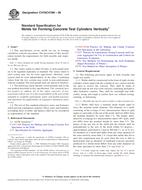 ASTM C470/C470M-09..
ASTM C470/C470M-09..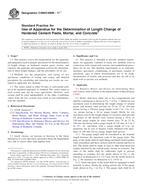 ASTM C490/C490M-11e1..
ASTM C490/C490M-11e1..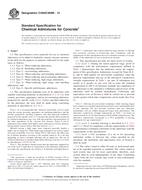 ASTM C494/C494M-13..
ASTM C494/C494M-13..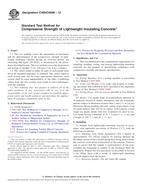 ASTM C495/C495M-12..
ASTM C495/C495M-12..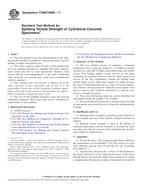 ASTM C496/C496M-11..
ASTM C496/C496M-11..
 Cookies
Cookies
